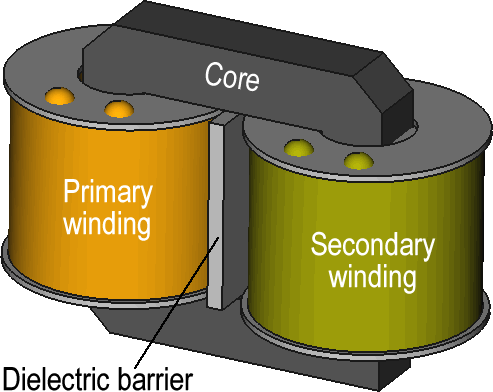Isolation transformer design*
Isolation transformers are devices, which block the transmission of the DC component in the electric signal, while allowing the AC components to pass through. They protect the equipment and human operators from dangerous voltages, and used in power supplies of sensitive equipment like computers or scientific instruments. Insolation transformers are often made with special insolation between the primary and secondary windings, and able to withstand high voltage. The windings of the isolation transformer thus should have only magnetic coupling and no electric connections.

Isolation transformer design may require many considerations to be taken into account. Finite-element simulations are required at many stages of a new isolation transformer design. Magnetic field simulations of the isolation transformer, simulation of the isolation transformer thermal stability are most important types of transformer analysis. But additional types of simulation may also be required.
All these types of isolation transformer analysis may be performed using QuickField software:
- AC Magnetic analysis may help to understand the magnetic flux distribution, and estimate the isolation transformer ratio and losses.

- Electrostatic analysis is required to select the insulation materials and construction.

- Heat transfer analysis may be needed to estimate the thermal stability.

- See examples of transformer modeling:
Pulse transformer. - Video:
Transformers simulation with QuickField.
Wikipedia: https://en.wikipedia.org/wiki/Isolation_transformer.